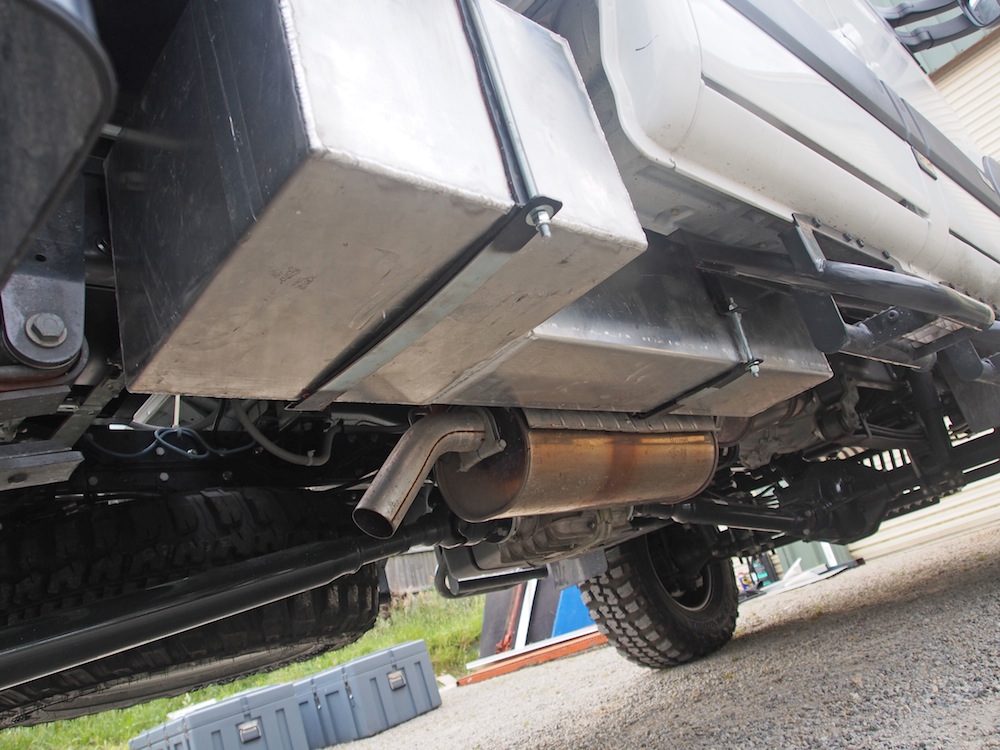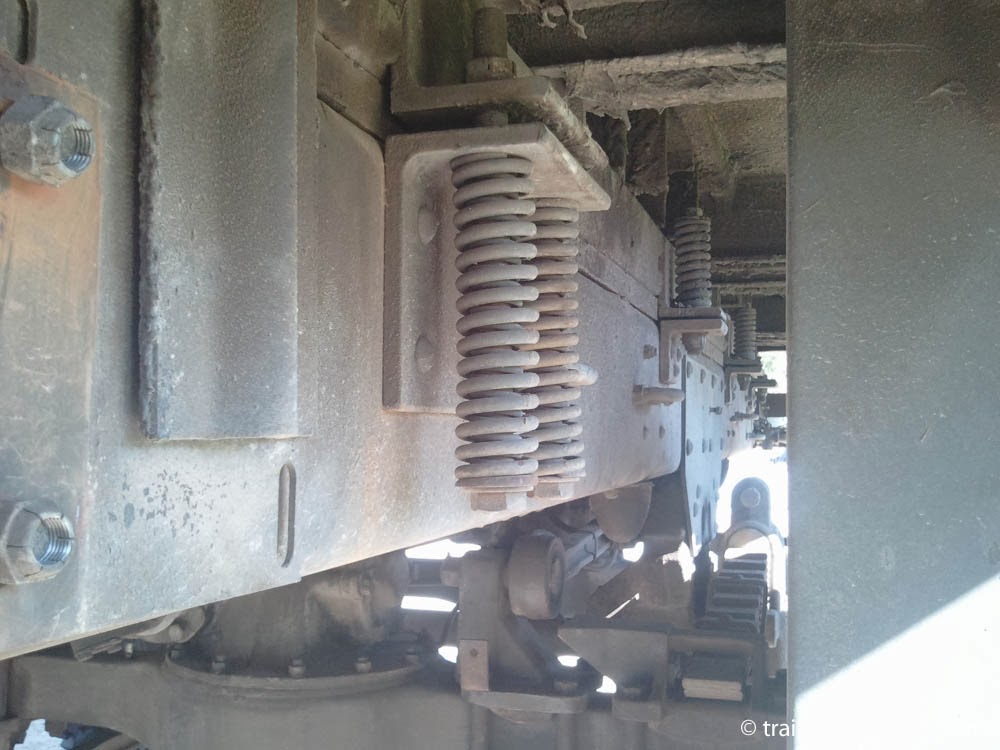jefe here. This is the second time in 3 years I've been forced into reading this entire thread. It is, and remains awe-inspiring. I've seen, firsthand enough of the 3-and-4 point diamond pivoting mounts for camper boxes and have a pretty good handle on all the derivations and 'covert' mounting styles. So, the following could be considered point-counterpoint.
I have taken a much more laid back approach to my XTC (extreme truck camper) using much of the physics of metal I learned from building quite a few off-road vehicles including rock crawlers. Pretty good articulation for a leaf spring CJ8: This is in the Little Sluice on the Rubicon,

1. I have a 2001 Dodge 2 series HO Cummins 4x4 short bed that I bought new as I had a feeling it would outlive me. So far, so good. It has the factory stamped and spot welded metal bed held to the frame tabs with FOUR, 3/8's inch bolts. Beats me. Must be the shear factor of the thin stamped bed. It sure has no torsional resistance. I have found that a short bed frame twists less than a long bed. I have found the Dodge Hydo-formed frame of that era, although not as good as the current frames, twisted a lot less than the frames of similar era trucks built by Ford. Subsequently, I beefed up the front and rear suspension by adding 3" lift coils in front and put together a homemade rear spring arrangement with 5 leaves on the main pack and 3 leaves up on the secondaries (overloads) giving me a pretty good ride while empty but a lot of load carrying suspension when fully loaded and or towing. It's good to note that I get a lot more flex out of the front coil springs than I do with the rear 8 leaf packs, loaded.
2. I bought a used 1998 Lance Lite, 165-s, hardside, wooden frame truck camper in 2001 and have camped, mostly boondocking for over 200 nights from Mexico to above the Arctic Circle. It weighs 1845 pounds, wet. Right away I was cognizant of the fact that if the four tie-downs were too tight, bad things would happen to the camper's wooden frame. Further, if too tight and on undulating roadways or trails, things would go south quickly. So, it was time to improvise, make do, overcome. The very first thing i did was to do what i could do to prevent the camper box from shifting in the truck bed. This is a no-no as it puts extreme tension on the tie-downs if the camper is skating around. Enter a quartet of Lance camper guides. I have seen much better versions of this recently, but at the time these were it.

I started to 'play' with the tie-down tension, loosening the rear pair to very loose when the axles started to twist up, and loosening the front pair to slightly loose. It's almost a Zen thing. You 'feel' the roadway and instinctively want to loosen the tension. Why that scenario? While using my four mechanical/manual jacks to jack the box up off my camper stands I found a lot more weight was on the front jacks and not so much on the rears. Hmm? If the truck frame twists, as it is want to do, if not tied down, which end of the camper would want to lift compared to an undulating frame and bed? The rears, of course as there is less weight. I have seen this action and am truly amazed at how unyieling the Lance wooden frame actually is. I can crank one jack all the way up, standing on 3 legs, and get no visible deflection out of the Lance frame. So, how has this constant twiddling worked out? So far, so good. On a recent XTC trip over some pretty rough jeep trails, I did my loosening but found the bottom of the frame had some concussion damage from pressing into the guides on one side. You can see a slight frame twist by comparing the camper box to the cab in this photo but that's about as bad as it gets. Also, the low side in this pic is the side that received the most concussion damage:


My fix was affix some long extruded aluminum L bars to the side/bottom of the camper box. This should spread the concussion out along the bar. Time will tell. Im also going to put rubber strips on the camper guides to mitigate any shock loading. I have the thinnest rubber bed mat I could find and it takes a lot to move the box at all, even if not tied down.

I know this is so damned low tech for many of you pivot junkies, but I'm pedaling as fast as i can to stay ahead of the dredded camper pull-apart.
In the end I try to avoid twisting up the axles as much as i can, and while I go looking for the off-road edge, I'm still sane enough to not go looking for trouble.
I live about a mile from the guy that owns XPCamper and have had some good talks with him. It was very difficult not to drool over the units he had 'in build' at his new giant facility in Grass Valley, CA. I could be swayed. And he uses pivoting frames.
Point-counterpoint.
regards, as always, jefe










